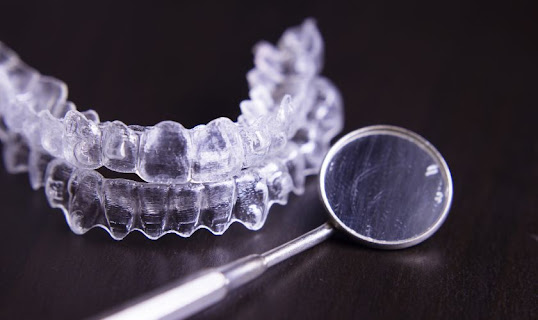The Importance of Early Orthodontic Treatment for Children
Orthodontic treatment plays a vital role in the overall dental health and well-being of children. As parents, it is essential to understand the significance of early orthodontic intervention and its long-term benefits. This article aims to highlight the importance of seeking early orthodontic treatment for children and the role of pediatric dentists and orthodontists in ensuring optimal dental health.
What is Early Orthodontic Treatment?
Early orthodontic treatment, also known as interceptive orthodontics, focuses on diagnosing and treating dental and skeletal issues in children at a young age, typically between 7 and 10 years old. This proactive approach allows orthodontists to identify potential problems and correct them before they become more severe and harder to treat during adolescence or adulthood.
Pediatric Dentist: The First Line of Defense
Regular visits to a pediatric dentist are crucial for children's oral health. These specialized dentists are trained to diagnose and treat dental issues specific to children. They are experts in identifying early signs of orthodontic problems, such as crowded or misaligned teeth, and can refer patients to orthodontists for further evaluation and treatment.
The Role of an Orthodontist in San Antonio
Orthodontists are dental specialists who focus on the diagnosis, prevention, and treatment of dental and facial irregularities. The Orthodontist in San Antonio plays a pivotal role in providing early orthodontic treatment for children. They are highly trained in assessing the growth and development of a child's teeth and jaws. Through comprehensive evaluations, orthodontists can identify problems early on and recommend the most appropriate orthodontic interventions.
Benefits of Early Orthodontic Treatment
1. Correcting Jaw Irregularities: Some children may experience jaw growth discrepancies, leading to misaligned bites or other functional issues. Early orthodontic treatment can help guide the growth and development of the jaws, correcting these irregularities and improving overall oral function.
2. Addressing Crowded or Misaligned Teeth: Crowded or crooked teeth not only affect appearance but also pose oral health risks. They can make it challenging to clean teeth properly, leading to an increased risk of tooth decay, gum disease, and other dental problems. Early orthodontic treatment can create space for permanent teeth to erupt correctly, reducing the likelihood of future dental complications.
3. Preventing Speech and Breathing Issues: Orthodontic problems can impact a child's speech development and breathing patterns. Correcting issues such as malocclusions or crossbites early on can prevent speech impediments and improve proper airflow, reducing the risk of sleep apnea and other breathing disorders.
4. Boosting Self-Esteem and Confidence: Misaligned teeth or noticeable orthodontic issues can significantly impact a child's self-esteem. Early orthodontic treatment can help improve the aesthetics of the smile, giving children the confidence they need during critical developmental stages and beyond.
5. Simplifying Future Orthodontic Treatment: Early intervention can often reduce the complexity and duration of orthodontic treatment needed later in life. By addressing issues during the optimal growth phases, orthodontists can utilize various techniques, such as braces or orthodontic appliances, to guide the teeth into their proper positions effectively.
Conclusion
Early orthodontic treatment is an essential investment in a child's overall dental health. Recognizing the importance of seeking care from a pediatric dentist in San Antonio and consulting with an orthodontist at the right time can help prevent future dental issues and ensure a lifetime of healthy smiles. By addressing orthodontic concerns early on, parents can empower their children with the gift of a beautiful, functional, and confident smile.
FAQs
1. When should my child start receiving early orthodontic treatment?
Early orthodontic treatment is typically recommended for children between the ages of 7 and 10. This is because, during this time, the child's mouth and jaws are still developing, making it easier to address any dental or skeletal issues. However, every child is different, and it's best to consult with a pediatric dentist or orthodontist in San Antonio to determine the optimal time for your child to begin treatment.
2. What are some common orthodontic issues that can be treated early?
Early orthodontic treatment can address a variety of dental and skeletal issues, including crowded or misaligned teeth, crossbites, overbites, underbites, and jaw growth discrepancies. By identifying and correcting these problems early on, orthodontists can guide proper dental development and prevent more severe issues from arising later in life.
3. How long does early orthodontic treatment typically last?
The duration of early orthodontic treatment varies depending on the specific needs of the child. In some cases, treatment may be completed in a few months, while in more complex cases, it could take a year or more. Orthodontists will create a customized treatment plan tailored to your child's needs, outlining the expected duration and the steps involved in the treatment process.
4. What are the benefits of early orthodontic treatment over waiting until adolescence?
Early orthodontic treatment offers several advantages compared to waiting until adolescence. Firstly, it allows orthodontists to take advantage of the natural growth and development of a child's teeth and jaws, making certain interventions more effective. Secondly, it can help prevent more severe issues that may require more extensive and invasive treatments in the future. Additionally, early treatment can improve the child's self-esteem and confidence during crucial developmental stages.
5. Will my child need braces during early orthodontic treatment?
Braces are a common orthodontic treatment method for children, but not all children will require them during early orthodontic treatment. The treatment plan will depend on the specific needs of your child. Orthodontists may use other appliances, such as removable retainers, expanders, or functional appliances, to guide the growth and alignment of the teeth and jaws. The orthodontist will determine the most suitable treatment approach based on the child's individual circumstances.




Comments
Post a Comment